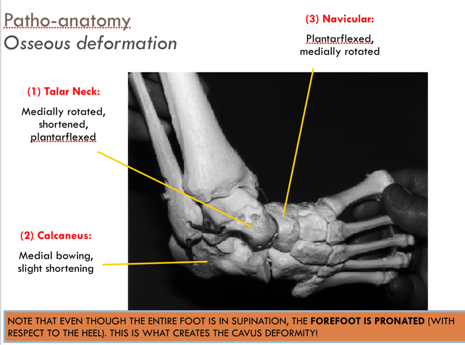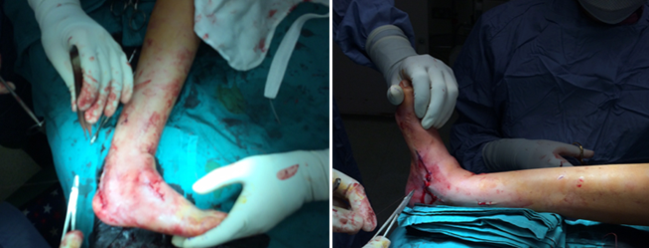Club Foot, also known as Congenital Talipes Equinovarus (CTEV), is relatively common and is in fact the most common musculoskeletal birth defect.
What is club foot?
Club foot is a condition in which the foot is shaped like that of a golf club – hence the term.
Club foot causes and symptoms
It is an isolated deformity in 80% of cases and 50% involve both feet. Muscle contractures contribute to the deformity of CAVE (Cavus, Adductus, Varus, Equinus), and probably lead to the resultant bony deformities.
Its cause is unknown but it has been postulated to be multifactorial with a strong genetic component and may be the result of intra-uterine moulding, and in some cases, associated with other conditions. Hence, an examination of the spine, hips, upper and lower extremities should be performed.



How is club foot diagnosed?
This is achieved after a clinical examination. Radiological investigations are usually not required for the diagnosis and indeed are redundant if other associated disorders are ruled out.
How is club foot treated?
Club Foot can be of the Positional (flexible) or Structural (less flexible) variety.
Flexible ones are also known as positional club foot and do not require casting. Some parents opt for physiotherapy as an adjunct and this is possible while not mandatory.
The Structural Club Foot does well with casting (Ponsetti casting), in most cases, thereby obviating the need for surgery.
Ponsetti casting
Ponsetti casting is a serial weekly toe to groin casting which aims to slowly bring the foot and ankle into a normal position known as plantigrade.
Often a heel cord release is required in order to complete the reduction. After the procedure, the child is placed in special boots which are connected by a bar.
Non-compliance to the wearing of this may lead to relapse. Failed casting measures may necessitate surgical intervention.

Atypical club foot
There is another type of club foot, more rigid and severe than the other types, known as the atypical club foot, which shows a deep transverse crease.
This variety is more likely to fail conservative measures and would require surgical intervention.
Surgery is indicated in a failure of conservative management; relapsed/ recurrent cases; atypical; neglected and late presentations and in some cases associated with other disorders. Surgery entails soft tissue releases, tendon transfers, and sometimes bony cuts. Sometimes a circular ring fixator may be required in the more severe cases.


Looking For A Reliable Paediatric Orthopaedic Orthopaedic Specialist?
Fast Medical Attention, Transparent Fees
Make an appointment for comprehensive care for your paediatric orthopaedic problems!
